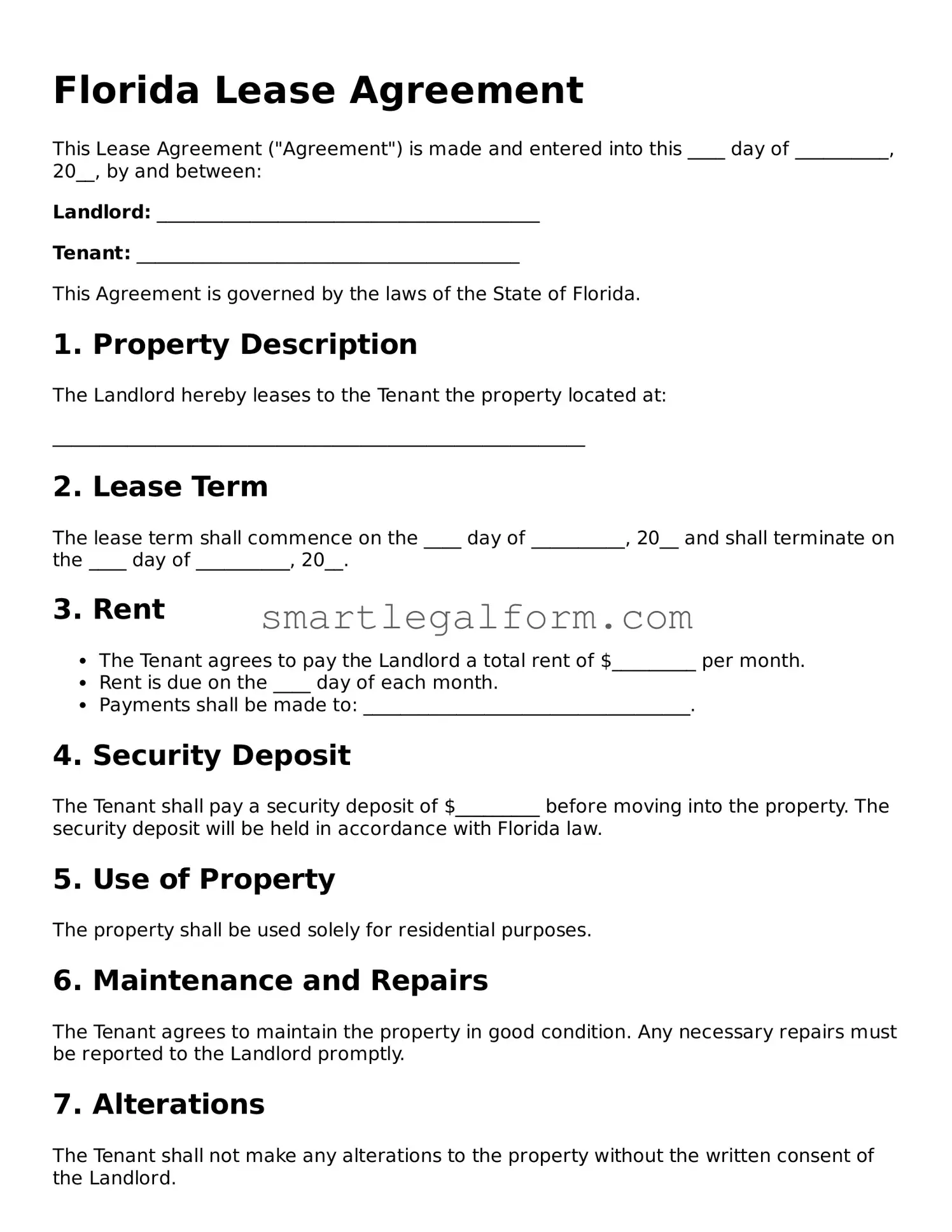Florida Lease Agreement
This Lease Agreement ("Agreement") is made and entered into this ____ day of __________, 20__, by and between:
Landlord: _________________________________________
Tenant: _________________________________________
This Agreement is governed by the laws of the State of Florida.
1. Property Description
The Landlord hereby leases to the Tenant the property located at:
_________________________________________________________
2. Lease Term
The lease term shall commence on the ____ day of __________, 20__ and shall terminate on the ____ day of __________, 20__.
3. Rent
- The Tenant agrees to pay the Landlord a total rent of $_________ per month.
- Rent is due on the ____ day of each month.
- Payments shall be made to: ___________________________________.
4. Security Deposit
The Tenant shall pay a security deposit of $_________ before moving into the property. The security deposit will be held in accordance with Florida law.
5. Use of Property
The property shall be used solely for residential purposes.
6. Maintenance and Repairs
The Tenant agrees to maintain the property in good condition. Any necessary repairs must be reported to the Landlord promptly.
7. Alterations
The Tenant shall not make any alterations to the property without the written consent of the Landlord.
8. Termination
- Either party may terminate this Agreement by providing ____ days written notice.
- Upon termination, the Tenant shall vacate the property and return all keys to the Landlord.
9. Additional Provisions
_________________________________________________________
_________________________________________________________
10. Signatures
By signing below, both parties agree to the terms of this Lease Agreement.
Landlord Signature: _________________________________ Date: ______________
Tenant Signature: _________________________________ Date: ______________
